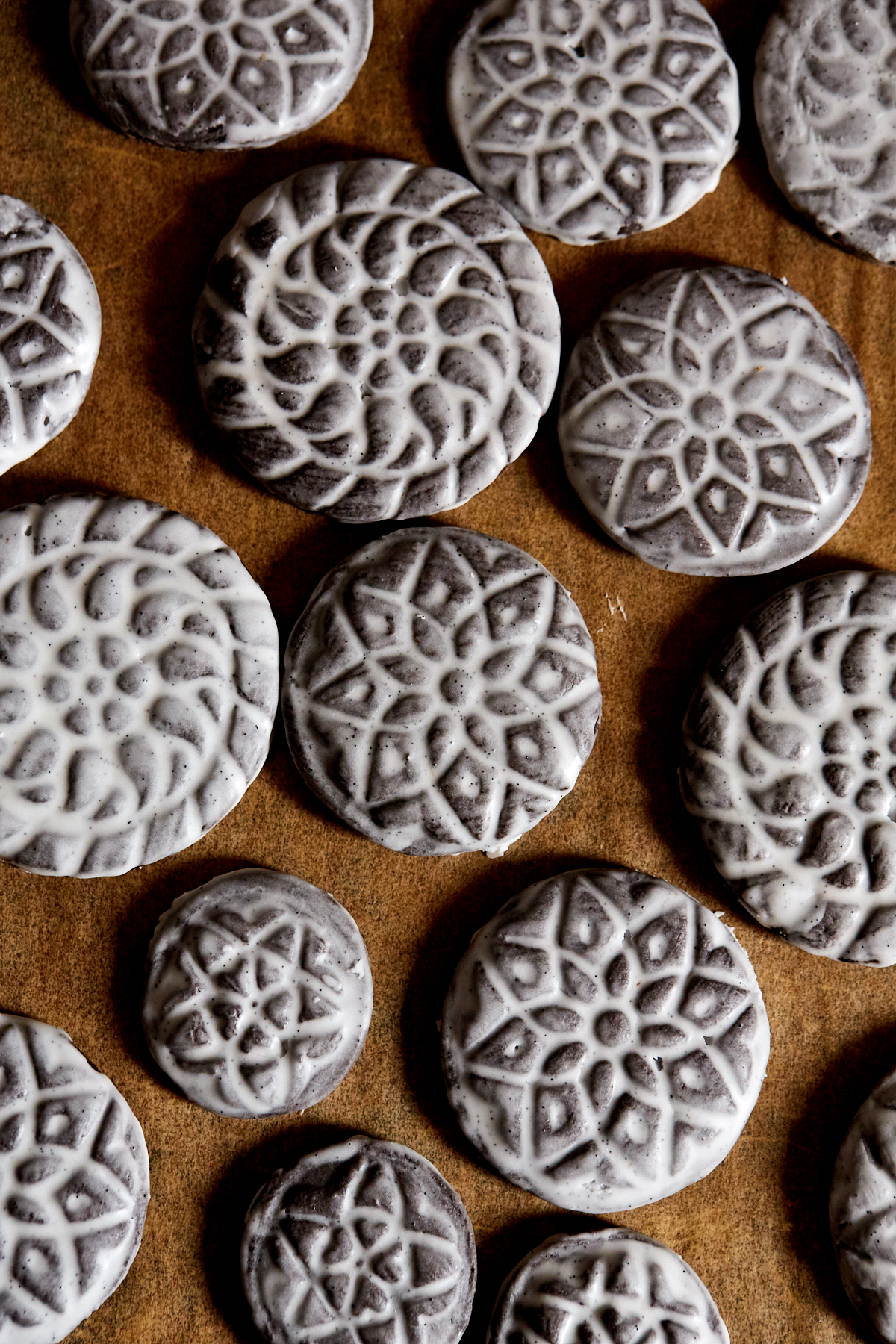Stamped Brownie Cookies
/Last year I fell in love with stamped gingerbread cookies so this year I was primed and ready for another stampable cookie for my holiday packages. I find that darker doughs - like chocolate or gingerbread are the most dramatic when glazed, so I went for deep rich chocolate with both Dutch process and black cocoas. You can stamp just about any cut out cookie dough that holds it’s shape while baking though, so if you’ve invested in stamps try out a few doughs. And alternately, these cookies are absolutely gorgeous when stamped and glazed, but also work well as cut out cookies without a stamp. Happy Baking! I’ll be back soon with more cookies!
Stamped Brownie Cookies
makes about 3 dozen cookies, depending on the size
Slightly adapted from Smitten Kitchen’s Brownie Roll-Out Cookies
These soft and chewy chocolate cookies are gorgeous when stamped, but also work well as cut out cookies if you don’t have a stamp. Flavor the glaze however you like, but a little peppermint and vanilla is nice for the holidays. I bet a little bit of espresso powder instead would be just delicious. Make sure to not over bake the cookies, they’ll lose their chew and will be more of a standard sugar cookie. I found 7 minutes in my oven was just right, but keep an eye on yours as all ovens vary. I like to brush the glaze on with a pastry brush. Use a thin layer to see lots of the cookie peeking through or a thicker layer for a more opaque look.
Brownie Cookies
3 cups (384g) all purpose flour
1/2 cup (50g) dutch process cocoa powder
1/2 cup (50g) black cocoa powder (or dutch process)
1 teaspoon kosher salt
1/2 teaspoon baking powder
1/4 teaspoon cinnamon (optional)
1 cup (225g) unsalted butter, softened
1 1/2 cups (330g) light brown sugar
2 large eggs
1 teaspoon vanilla extract
Glaze
1 cup confectioners sugar
3 tablespoons cream
seeds from 1/2 vanilla bean or 1/2 teaspoon vanilla paste
1 teaspoon peppermint extract
pinch salt
Whisk the flour, cocoas, baking powder, and salt together in a bowl.
In the bowl of a stand mixer, combine the butter and sugar. Cream until light and fluffy then add the eggs one at a time. Mix until well combined then add the vanilla.
Add the dry ingredients all at once and mix until combined. Make sure to scrape the bottom and sides of the bowl to ensure the dough is evenly mixed.
Turn the dough out onto a piece of plastic wrap and wrap tightly. Refrigerate the dough for at least one hour and up to 2 days.
When you are ready to bake, arrange two racks as close to the center of the oven as possible and heat the oven to 350ºF. Line two baking sheets with parchment paper.
Work with half of the dough at a time and roll out the dough so it’s about 1/4-inch thick. Dip the cookie stamps in a bowl of cocoa powder or flour, shake off any excess and then press them firmly into the dough, one at a time, to create a deep imprint. Use a round cutter to cut the cookies.
Transfer the cookies to the lined baking sheets about 1-inch apart. Re-roll the dough scraps and continue to stamp and cut until all the dough is used up. Bake the cookies until they are just firm to the touch and puffed, 7-10 minutes. Rotate the baking sheets from top to bottom and front to back halfway through baking.
Prepare the glaze while the cookies are baking as it is best brushed on while they are still warm. Whisk all of the ingredients together in a small bowl. It should be the texture of Elmer’s Glue. If it seems a little thin, add a tablespoon or two of confectioners sugar. If its thin, add a little more cream.
Remove the cookies from the oven, let them rest for 5 mins, then brush or dab the glaze all over with a pastry brush. Transfer to a wire rack to cool completely. Cookies will keep for a few days in an airtight container at room temperature.
I used hand carved cookie stamps for these cookies. Zozo Baking sells similar ones.
You can also find cookie stamps in most kitchenware shops or online.























